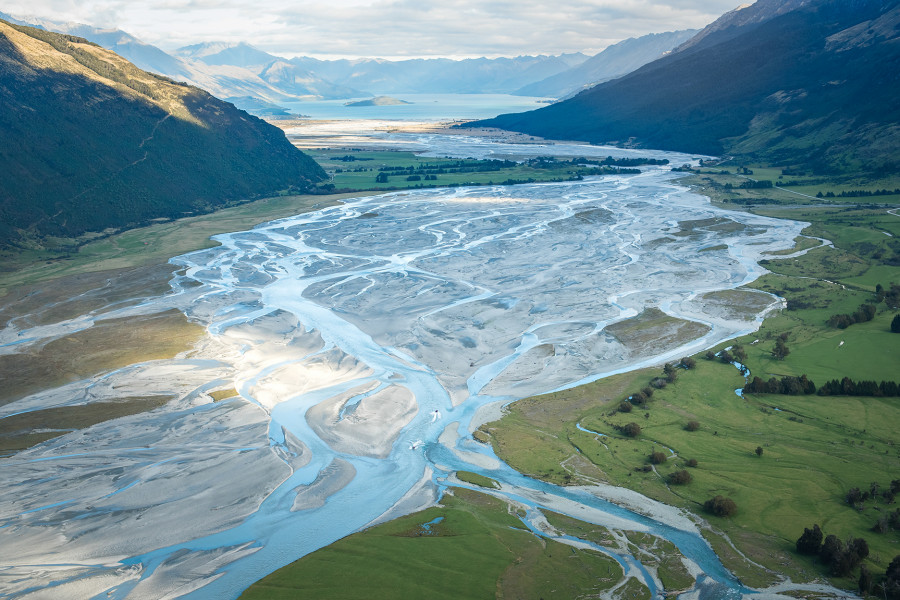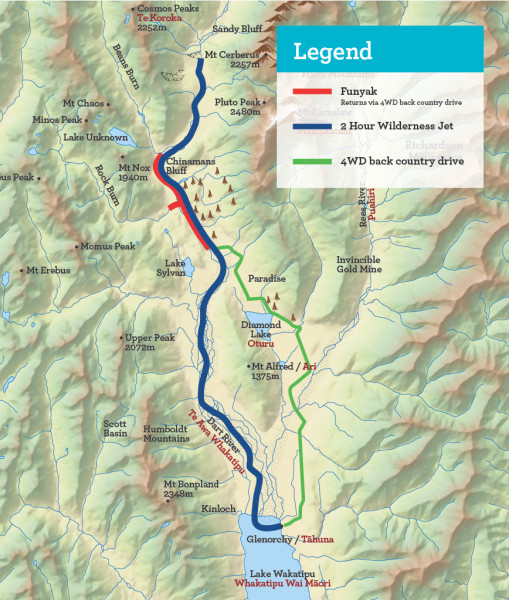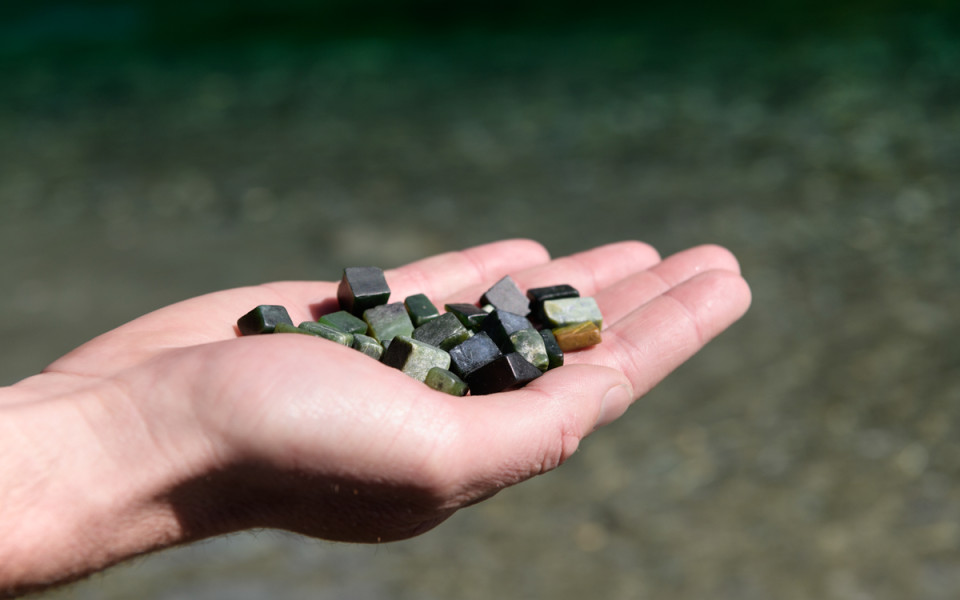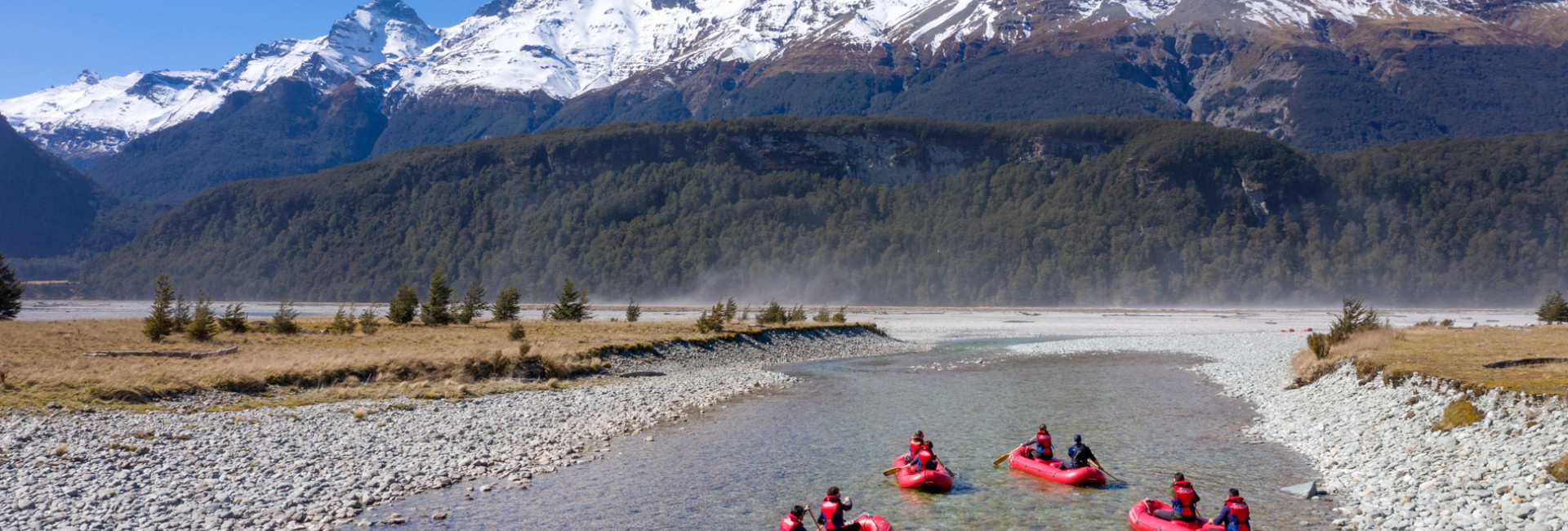
Your journey with Dart River Adventures is an exhilarating and spectacular trip deep into the heart of the world-renowned Mount Aspiring National Park.
Travel with us into a remote untouched world, to places which are inaccessible by any other means.

Every trip with Dart River Adventures is different.
The varying water levels in the glacier-fed Dart River mean every journey is unique, allowing us to access different areas and showcase new features of the impressive geographic landscape.
Due to weather and our ever-changing wilderness environment, we can't always guarantee the exact route or locations you’ll visit (this includes inside the chasm). The vistas are stunning everywhere you look, so rest-assured you will always experience the beauty of this untouched paradise!

Te Wāhipounamu covers 10% of New Zealand’s total land area at 2.6 million hectares in size. It encompasses Westland Tai Poutini, Aoraki/Mount Cook, Mount Aspiring and Fiordland national parks.
To local Māori tribe Ngāi Tahu, this majestic landscape is an important part of our cultural heritage. The region is subjected to constant movement of the Alpine Fault and also contains precious pounamu (jade) that was famous for its iron toughness and beauty, and was traded through out Aotearoa (New Zealand).
Te Wāhipounamu is regarded as one of the worlds best examples of a dynamic mountainous landscape. The Southern Alps – Kā Tiritiri o te Moana – is the result of the Pacific and Indo-Australian plates of the earth’s crust forcing the alps to rise sharply along the fault line.
It is also recognised as one of the world’s most outstanding glacial landscapes. The reminants of the Dart Glacier can be seen locally in the form of Whakatipu-wai-Māori (Lake Wakatipu) and Diamond Lakes left behind as the ice has retreated, and in the formation of terraces still visible today on the hillsides. The large range of native plants and animals within the area are unique to Aotearoa (New Zealand) and represent the close links between this World Heritage Area today and the great continent of Gondwanaland of 100 million years ago.
